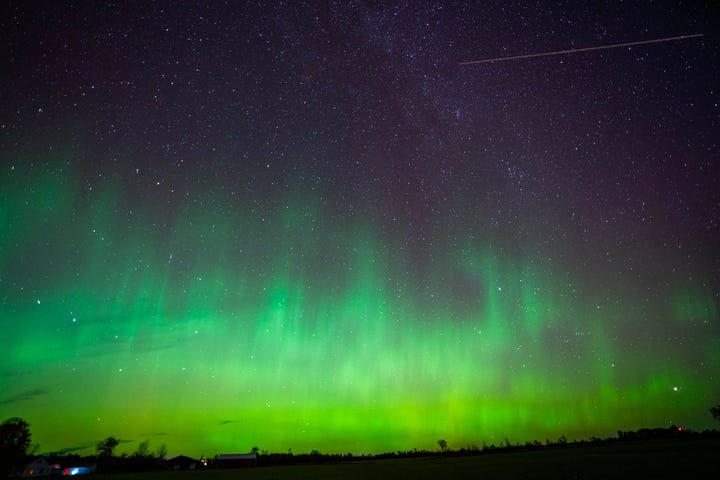
Where will northern lights be visible in the US? Incoming solar storm to unleash auroras. See where
The aurora borealis may be viewable to the naked eye in the northern Panhandle and Amarillo. Cities around Lubbock and Dallas may see the Northern Lights with a good camera in a low-light setting.
Celestial enthusiasts, look up: another chance to view the aurora borealis is upon us.
A rare, severe geomagnetic storm is expected to trigger auroras, potentially allowing residents in the northernmost parts of Texas to witness this spectacle with the naked eye. The aurora may be visible from Thursday night into early Sunday morning.

This follows a powerful geomagnetic storm in May — the first to reach a G4 magnitude since 2005 — which made the aurora visible across all of the contiguous United States, extending as far south as Central Texas.
Why has solar activity increased in 2024?
Space forecasters predict that during next summer, people in the United States will witness a surge in breathtaking celestial displays as the current solar cycle approaches its apex.
The sun is getting closer to the apex of its 11-year solar cycle, which NASA predicts will occur in 2025, and as a result, its electromagnetic activity is becoming more intense. Sunspots, or intensely magnetic regions of the sun’s surface, increase at this time, which is referred to as the solar maximum. According to USA TODAY, NASA refers to solar flares as the most potent explosive occurrences in our solar system, and they are created when these regions release pent-up energy.
Radiation from solar flares is released as X-rays and ultraviolet light, which reach Earth at the speed of light. Massive clouds of plasma and charged particles known as coronal mass ejections are released from the sun’s outer atmosphere, or corona, in conjunction with some of these flares.
Geomagnetic storms can be produced when coronal mass ejections hit with Earth’s magnetosphere, which is its protective magnetic field. These storms have the power to magnify aurora borealis displays, producing amazing light displays that are visible in areas far from the poles.
A new solar storm with a G4 magnitude is expected soon, according to the Space Weather Prediction Center of the National Oceanic and Atmospheric Administration. This is due to a recent solar flare and a fast coronal mass ejection that is approaching Earth. This CME is the fastest one to be measured in Solar Cycle 25 with a wholly Earth directed component, traveling at 2.5 million miles per hour.
Where in Texas can you view the Northern Lights?
This weekend, residents in the northernmost parts of Texas, including Amarillo and cities to the north, might be able to view the Northern Lights with the naked eye. Texans on the South Plains, including Lubbock and surrounding regions, as well as cities north of Dallas-Fort Worth, might capture the aurora borealis with a good camera in low-light conditions.
Tips for viewing the Northern Lights
“Go out at night,” NOAA said. “And get away from city lights.”
The best aurora is usually within an hour or two of midnight (between 10:00 p.m. and 2:00 a.m. local time). These hours can expand towards evening and morning as the level of geomagnetic activity increases.
Leave a Reply